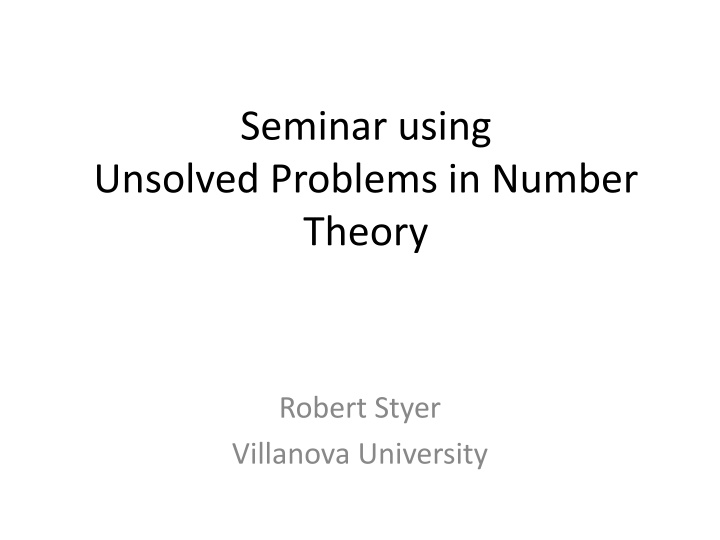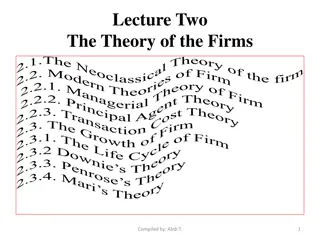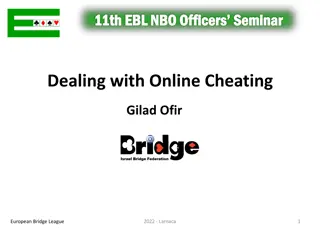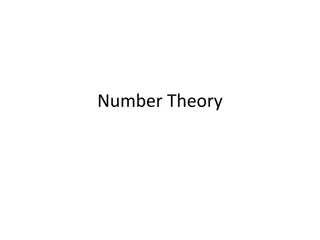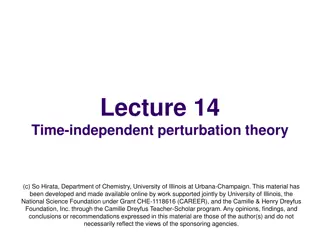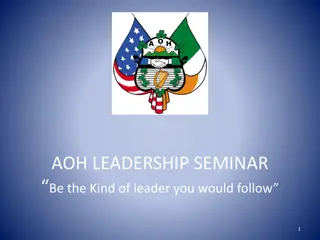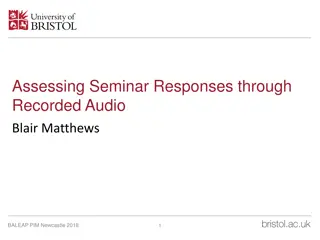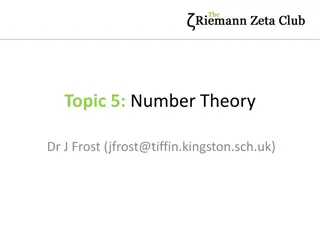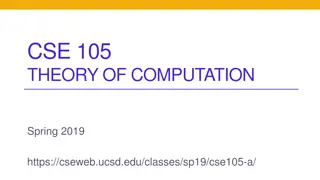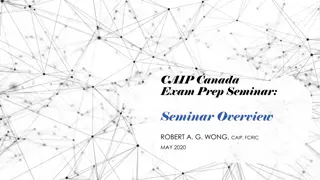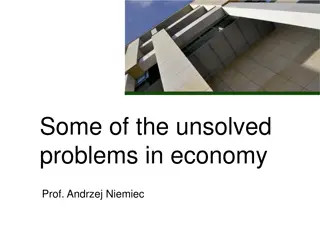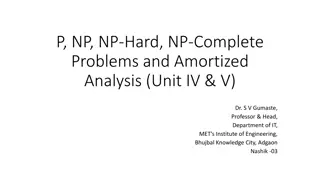Seminar using Unsolved Problems in Number Theory
This seminar explores unsolved problems in number theory, with a focus on Happy Numbers, UPINT, Birch & Swinnerton-Dyer Conjecture, and more. Students delve into research, presentations, and writing proofs while investigating intriguing mathematical concepts.
Download Presentation

Please find below an Image/Link to download the presentation.
The content on the website is provided AS IS for your information and personal use only. It may not be sold, licensed, or shared on other websites without obtaining consent from the author.If you encounter any issues during the download, it is possible that the publisher has removed the file from their server.
You are allowed to download the files provided on this website for personal or commercial use, subject to the condition that they are used lawfully. All files are the property of their respective owners.
The content on the website is provided AS IS for your information and personal use only. It may not be sold, licensed, or shared on other websites without obtaining consent from the author.
E N D
Presentation Transcript
Seminar using Unsolved Problems in Number Theory Robert Styer Villanova University
Seminar Textbook: Richard Guy s Unsolved Problems in Number Theory (UPINT) About 170 problems with references Goals of seminar: Experience research Use MathSciNet and other library tools Experience giving presentations Writing Intensive: must have theorem/proof
Best Students Riemann Hypothesis and the connections with GUE theory in physics Birch & Swinnerton-Dyer Conjecture Computing Small Galois Groups Hilbert s Twelfth Problem
Regular Math Majors Happy Numbers Lucky Numbers Ruth-Aaron numbers Persistence of a number Mousetrap Congruent numbers Cute and obscure is good! Room to explore.
What do these students accomplish? Happy Numbers, UPINT E34 44492 -> 4^2 + 4^2 + 4^2 + 9^2 + 2^2 = 133 -> 1^2 + 3^2 + 3^2 = 19 -> 1^2 + 9^2 = 82 -> 70 -> 49 -> 97 -> 130 -> 10 -> 1 -> 1 -> 1 Fixed point 1, so 44492 is happy
Happy Numbers 44493 -> 4^2 + 4^2 + 4^2 + 9^2 + 3^2 = 138 -> 74 -> 65 -> 61 -> 37 -> 58 -> 89 -> 145 -> 42 -> 20 -> 4 -> 16 -> 37 -> 58 -> A cycle of length 8, so 44493 is unhappy (or 4-lorn ) Most numbers (perhaps 6 out of 7) seem to be unhappy
Happy Numbers Obvious questions: Any other cycles? (no) Density of happy numbers? (roughly 1/7?) What about other bases? Consecutive happy numbers? 44488, 44489, 44490, 44491, 44492 first string of five consecutive happy numbers. What is the first string of six happy numbers?
Happy Numbers A proof that there are arbitrarily long strings published by El-Sedy and Siksek 2000. A student inspired me to find the smallest example of consecutive strings of 6, 7, 8, 9, 10, 11, 12, 13 happy numbers. This year a student found the smallest examples of 14 and 15 consecutive happy #s. Order the digits (note 16 -> 37 also 61 -> 37) .
14 Consecutive Happy Numbers My old method for 14 would need to check about 10^15 values Ordering the digits made his search 7 million times more efficient. Students enjoy doing computations There are always computational questions that no one has bothered doing, and they are perfect for students.
Multiplicative Persistence Another digit iteration problem: multiply the digits of a number until one reaches a single digit. UPINT F25 6788 -> 6*7*8*8 = 2688 -> 2*6*8*8 = 768 -> 7*6*8 = 336 -> 3*6*6 = 108 -> 0. 6788 has persistence 5 Maximum persistence? Sloane 1973 conjectured 11 is the maximum.
Multiplicative Persistence Sloane calculated to 10^50 My student calculated much higher and also for other bases. Conjecture holds up to 10^1000 in base 10, and similar good bounds for bases up to 12. Persistences in bases 2 through 12 are likely 1, 3, 3, 6, 5, 8, 8, 6, 7, 11, 13, 7. Easy problem to understand and analyze; perfect for an enthusiastic B-level major.
Gaussian Primes Student programmed very fast plotting of Gaussian primes Picture near origin Red denotes central member of a Gaussian triangle Analog of twin prime
Questions about Gaussian primes Density, analog of the density of primes Density of triangles, analog of the density of twin primes Moats: the student estimated what radius should allow a larger moat than those proven in the literature, and he drew pictures showing typical densities at that radius
Other simple problems Epstein s Put or Take a Square Game: new bounds, replaced square with prime, 2^n Euler s Perfect Cuboid problem: use other geometric figures, what subsets of lengths can one make rational Twin primes: other gaps between primes N queens problem: use other pieces Egyptian fractions: conjectures on 4/n and 5/n, what about higher values like 11/n? Practically perfect numbers |s(n)-2n| < sqrt(n)
Summary Simple problems work well Obscure problems have more room to explore Students can compute new results if one looks for specific instances of general theory: least example of n consecutive happy numbers persistence in several bases density of Gaussian prime triangles Students love finding something that is their addition to knowledge!
